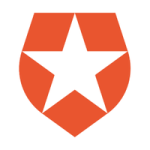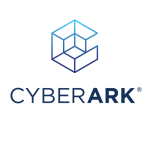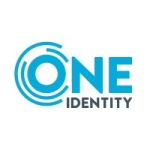What is our primary use case?
It is basically for authenticating the users, whether it be privileged users or employees. Thus, we use that single sign-on (SSO) as an authentication mechanism.
How has it helped my organization?
It is a simple solution to implement, and it provides additional flexibility.
What is most valuable?
Right now, federation that comes out-of-the-box with single sign-on is the most valuable feature that we have, and also scalability.
What needs improvement?
Better documentation. I went through some sessions on single sign-on for version 12.7. Whatever features we are looking for from a REST API perspective, they will be there. So far, it is good. We have to implement it, and figure out what is good or bad about it.
There are a few other competitors which are taking up advantage over the segment being more agentless. SiteMinder is more driven with agent-based authentication, but the others are going with being more agentless. So, we have to go into the more next gen technology, where other vendors are going into, and that is where SiteMinder is lagging behind. The speed at which they are bringing up these features, it is very slow.
For how long have I used the solution?
More than five years.
What do I think about the stability of the solution?
It is stable, but certain features which are out in the market are not available to make it more robust.
What do I think about the scalability of the solution?
We are able to scale well with the amount of users that we have and the users that we are supporting. So, it is quite scalable. However, it does not scale vertically. It is only scalable horizontally. Therefore, it increases the footprint.
Right now, we have hundreds of policy servers between two datacenters. If it was vertically scaling, the footprint would have been reduced, and we have been looking towards a solution. However, the SiteMinder platform as such, even the 64 bit, is built on a horizontal scaling architecture. I do not think it is built on vertical scaling. Even if it is, for most of the companies like us, where we invest in a lot of infrastructure, vertical scaling would not really help.
How is customer service and technical support?
We had a legacy implementation, and their technical support has been acclimatized to the new partnership federation, so they could not help much in terms of the solution. Therefore, I had to do trial and error to figure out what to do with it, and get it working.
Over the past years, CA support has been only focused on problem areas. When there is a specific problem, they will focus on resolving that problem. They are more focused on closing tickets. They are more focused on getting the tickets closed than resolving them. If the solution is not resolved, and if I requesting, "Hey, I want a couple of weeks for that to be open." Sometimes, they do it. Sometimes, they say, "Hey, we will close the ticket, then you can reopen a new one."
Other instances, if it is a feature that we need answers on, support sometimes says you need to get professional services to get engaged. I do not know whether it is the right direction that CA wants to go, because support is something that support professionals are supposed to know about the product. I would go and open up a ticket to get answers based on the feature that is available or what we are planning to do. We cannot just go hire professional services for everything that we do.
All of the feedback within our team for CA Support is not good. It really is on a very low level, but then it is very specific for CA SSO. The CA support for other products, like CA Spectrum, has been good. However, for CA SSO, it is absolutely poor.
How was the initial setup?
The initial setup was straightforward. Also, we have been doing upgrades, in place upgrades, as well as cloning infrastructure, which has been pretty straightforward.
However, the documentation is very unclear. It is painful to go through the actual documentation and get the information which we need.
I opened up a ticket a couple of weeks ago. It was on strong authentication where we wanted to upgrade from an older version to a newer version. I had to go through three documents and open up a ticket to understand how the upgrade process should happen. It was so confusing. In one document, they say something, and in another document, they say another thing. I actually had to open up a ticket for this. I wanted to delegate the work to somebody else, and when they asked me the question, I did not have the answer, because it was distributed across three documents.
Even during my initial deployment of strong authentication, this was the older six stack two version, if I would have gone through the document to build it, I would not have done it. We had professional services sitting with me, because I was doing a PoC. At that time, we went through the installation, and I was able to receive some help.
But for everything, I cannot go to professional services. If the documentation was straightforward, then I do not have to refer to professional services. That is one thing that I have noticed, the documentation is really unclear.
Which other solutions did I evaluate?
Ping and ForgeRock. In our company, because they are competitive and have an edge over SiteMinder, they are even considering going for ForgeRock or Ping. These companies are more flexible and are open source products, whereas SiteMinder is propriety.
So unless we get into something, then we can't even go to open source and get the information. It is basically, we have to reach out to CA to get answers.
That is what management is looking for. They want versatility, and when senior management looks for a product, they are looking at:
- Can we customize a product?
- Can we add features?
That is the thing that they're looking at, and they are finding Ping Identity, or Ping products, and ForgeRock products more appealing than SiteMinder.
What other advice do I have?
I have been working with Site Minder for the past 10 years, maybe more. However, I know the product, therefore I am able to manage it. The people in my team, they are not really happy with it, mostly from the support perspective.
Disclosure: My company does not have a business relationship with this vendor other than being a customer.















